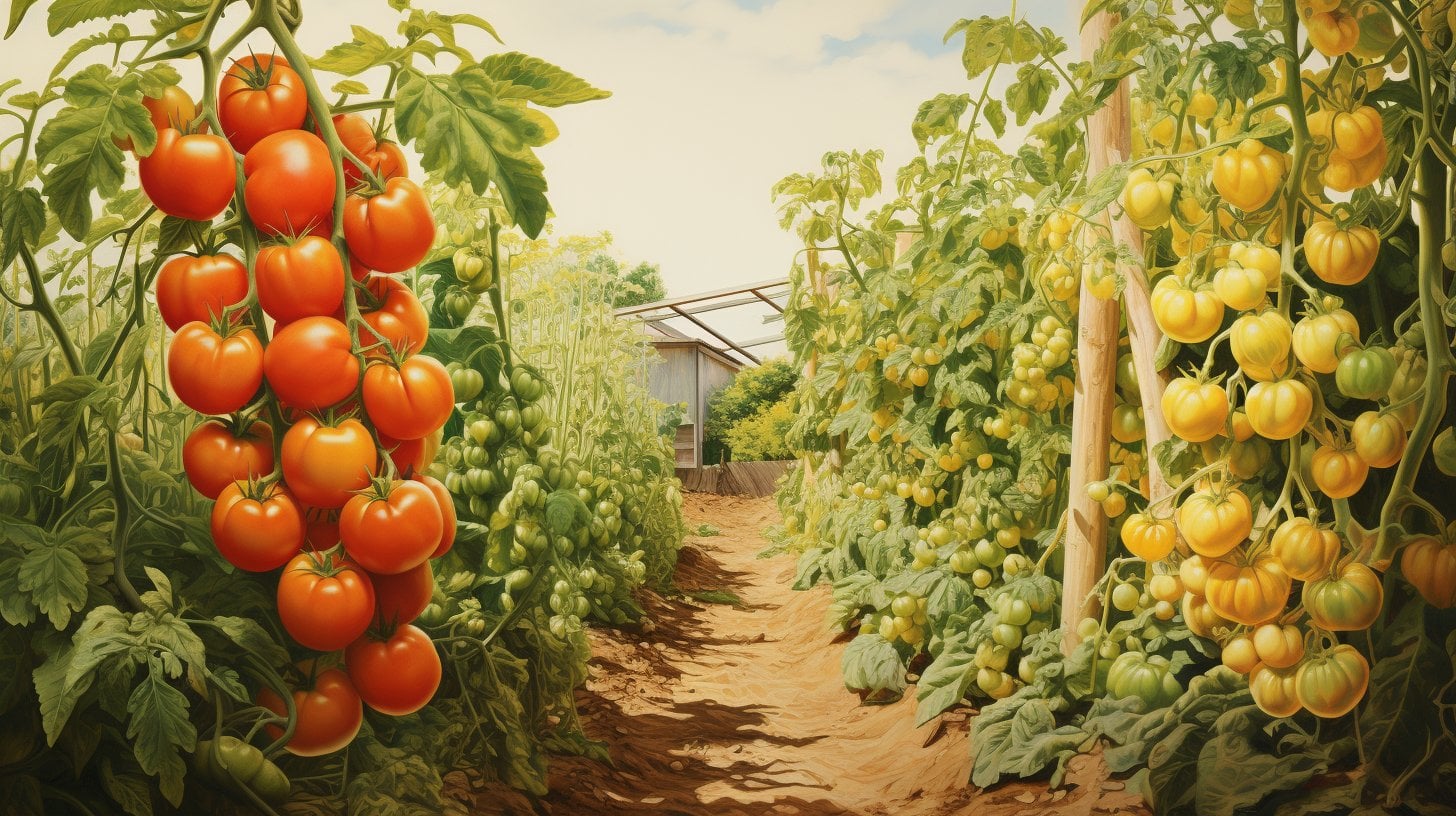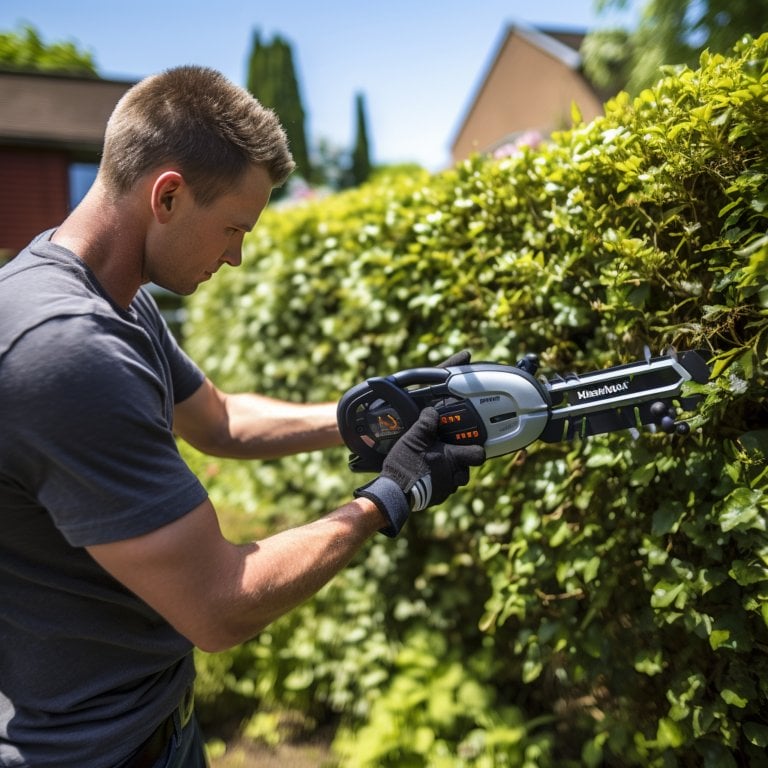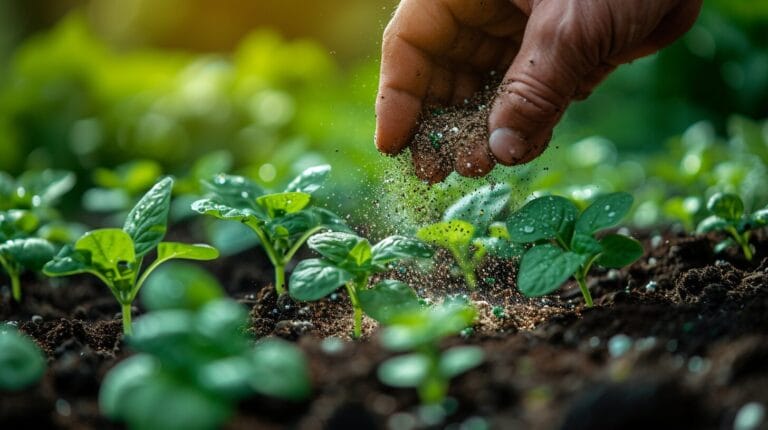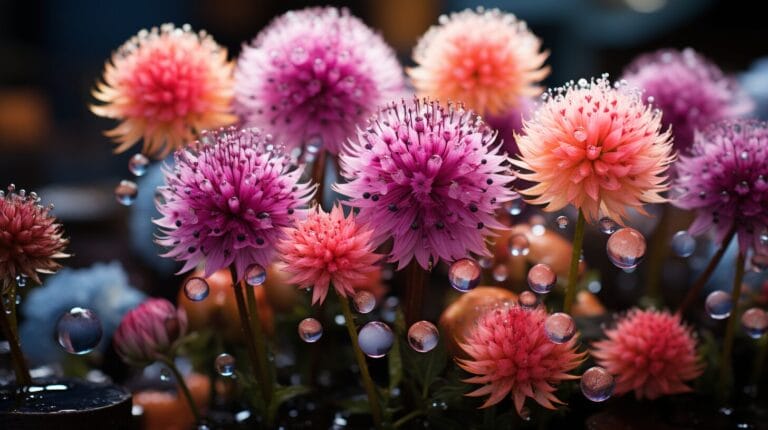How Far Apart Should Tomatoes Be Planted: Best Expert Guide
What is the correct spacing to maintain between tomato plants during plantation?
Well, it’s not as simple as it seems. Different varieties require different spacing. And trust me, understanding the science behind this can significantly boost your harvest.
So, whether you’re a beginner or an old hand, let’s dive into the world of tomatoes and master the art of perfect plant spacing.
Key Takeaways
- Different tomato varieties require different distancing.
- Proper distancing gives each plant sufficient access to sunlight, water, and nutrients.
- Crowded plants compete for resources and can result in stunted growth.
- Strategic distancing helps manage pests by creating natural barriers and easier pest inspection.
How Far Apart should Tomatoes be planted in Your Garden?

As a seasoned gardener, I’ve understood the significance of proper distancing when planting tomatoes. It’s not just about putting them in the ground and hoping for the best; you’ve got to give them space to grow.
Let’s delve into why adequate space between your plants is so vital. When these plants are closer together, they compete for resources such as sunlight, water, and nutrients. These tomatoes may result in stunted growth and decreased productivity. Proper distancing gives each plant sufficient access to these essential resources, promoting healthy growth and maximizing yield.
The impact of crowding on tomatoes goes beyond just their growth and productivity. When plants are tightly packed, ventilation is restricted, creating a favorable environment for spreading diseases. Fungal infections like powdery mildew and bacterial leaf spots can thrive in crowded conditions, leading to a higher risk of plant damage and reduced overall health. Giving these plants enough area improves ventilation, reducing the likelihood of disease outbreaks and promoting plant longevity.
Strategic spacing can also help manage pests in your vegetable garden. When plants are overcrowded, pests such as aphids and spider mites can easily move from one plant to another, causing widespread damage. By providing adequate area between your plants, you create natural barriers and make it more challenging for pests to spread. Additionally, proper distancing allows for easier pest inspection and treatment, as you have better access to each plant.
Why is Adequate Space Between Your Tomatoes Essential?
I’ve found that giving my tomatoes enough space is key to their overall health and productivity. Proper distancing is crucial because it enhances ventilation, reducing the likelihood of disease and pest infestation. Why is adequate room essential, you ask? Well, let me explain.
| Benefits of Proper Spacing | Description |
| Improved Air Circulation | Reduces fungal infections |
| Easier Maintenance | Simplifies pruning and harvesting |
| Better Sunlight Exposure | Enhances photosynthesis |
| Reduced Pest Infestation | Lessens chance of insect damage |
| Improved Yield | Encourages more robust growth |
The Impact of Crowding on Tomato Growth and Productivity
Crowding my tomatoes close together has had a noticeable negative impact on their growth and productivity. As I’ve observed, the impact of crowding on tomato growth and productivity is significant. It’s so crucial to give these plants the room they need.
Properly distancing your tomatoes can result in the following:
- Bountiful, healthy red fruits
- Green, vibrant leaves
- Strong, sturdy stems
- Fewer instances of disease and pests
I’ve learned the hard way that these plants need enough room to flourish. Correctly distancing your tomatoes isn’t just about planting; it’s about nourishing their growth and productivity.
If you want your tomatoes to thrive, give them the necessary space. Trust me, plant growth benefits greatly from adequate room.
Managing Plant Health and Pests Through Strategic Spacing
Strategic distancing is my go-to approach for managing plant health and preventing pests. Regarding how far tomatoes should be planted with each other, I’ve developed a handy guide to help determine the optimal tomato distancing.
| Tomato Variety | Space Between Plants | Space Between Rows |
| Dwarf | 12 inches | 24 inches |
| Determinate | 24 inches | 36 inches |
| Indeterminate | 36 inches | 48 inches |
Figuring out the spacing for tomato plants can be a game-changer. It’s not just about maximizing yield. Proper distancing can deter pests and diseases. So, remember to space your tomatoes correctly next time you’re planting. It’s a simple yet effective way of managing plant health and pests through strategic distancing. So, always remember that tomatoes should never be planted closer together.
Understanding the Importance of Proper Tomato Spacing for Different Varieties
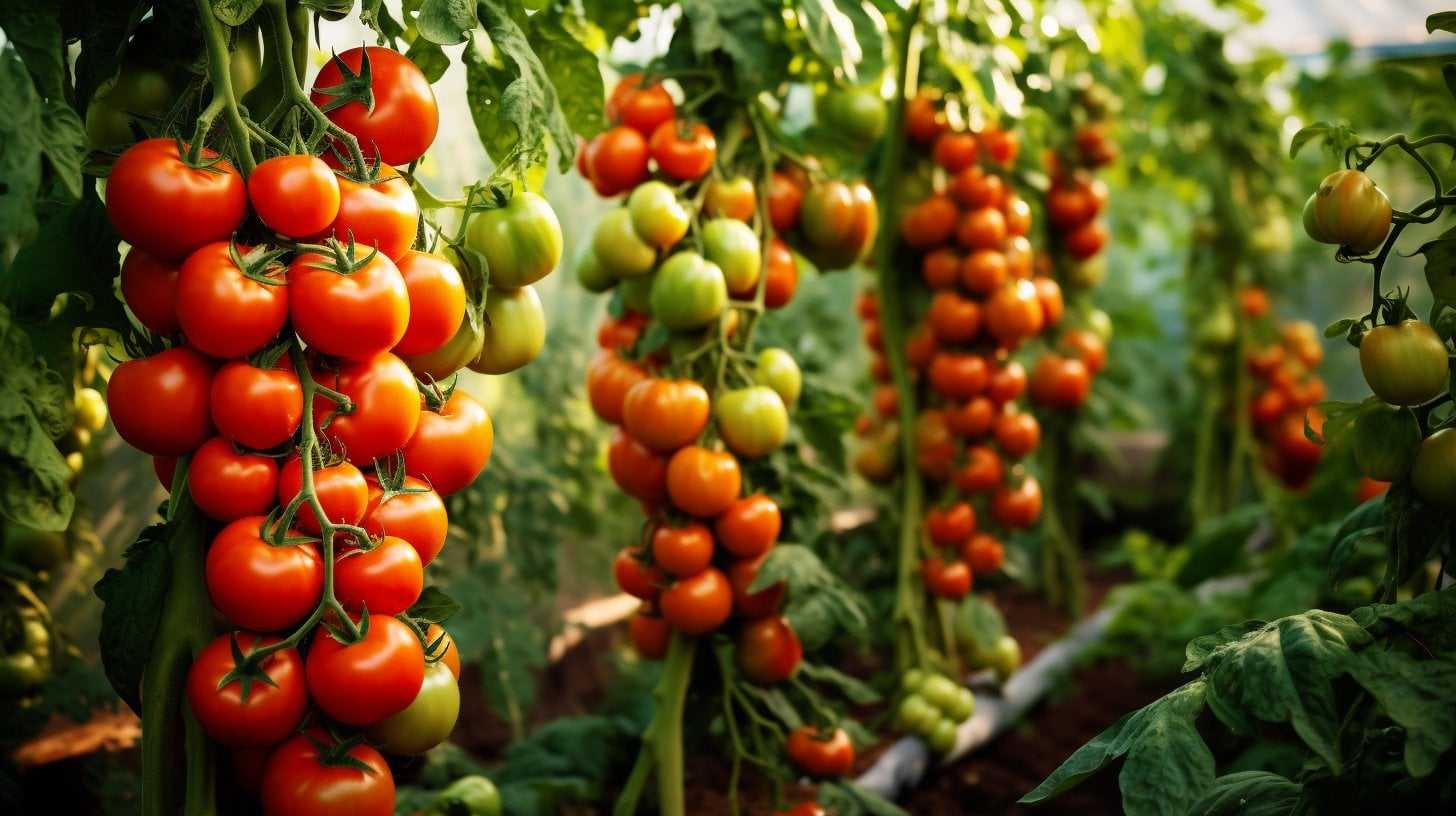
Now that we’ve covered the importance of proper tomato distancing let’s delve a bit deeper.
Understanding the different tomato varieties and their area preferences is key to a successful plantation. Trust me, knowing whether you’re dealing with an Indeterminate or Determinate tomato plant can make a world of difference!
Differentiating between Determinate and Indeterminate or Undetermined Tomato Plants
I’ve learned that understanding the difference between determinate and indeterminate tomatoes is crucial for knowing how far apart to plant them. Here’s why:
- Determinate tomato varieties grow to a fixed height, typically under 4 feet. They stop growing when fruit sets on their top buds. The fruit all at once, making them great for canning or making sauces.
- Indeterminate tomato varieties, on the other hand, can reach heights of 12 feet. They grow, flower, and produce fruit until frost kills them. They need more room to grow.
Differentiating between determinate and undetermined tomatoes helps in effective plantation planning. It ensures I give each plant the right amount of room it needs to thrive. It’s all about maximizing yield and maintaining healthy plants.
What’s the Ideal Space for the Type of Tomato You’re Planting?
To ensure the best growth for my plants, I must determine the ideal room based on the type I’m planting. The spacing for planting tomatoes varies, specifically for determinate and undetermined tomatoes.
| Type of Tomato | Plant Space | Why |
| Determinate | 18-24 inches | Compact growth, less sprawling |
| Indeterminate | 24-36 inches | Vigorous growth, needs area |
| Dwarf | 12-18 inches | Smaller plants, less room needed |
This isn’t just about following guidelines; it’s about respecting the area tomatoes need to thrive. I’ve seen the difference it makes. I’ve felt the satisfaction of harvesting plump, juicy tomatoes because I gave them the right distance. So, remember, the type of tomato dictates the space. Let’s ensure to get the space tomato plants need.
How Size and Growth Pattern Influence the Spacing of Tomato Plants
Understanding my tomatoes’ size and growth pattern is vital in deciding their spacing, as these factors directly affect how much room each plant needs to flourish. The spacing of tomatoes isn’t a one-size-fits-all approach; it’s contingent on the variety.
- Determinate tomato varieties tend to be smaller and bushier, typically needing 12-24 inches of spacing.
- Indeterminate tomatoes continue to grow and spread, requiring at least 24-36 inches between plants.
Each plant’s size and growth pattern may also be influenced by soil quality, sunlight exposure, and watering habits. The health and yield of tomato plants depend on carefully considering these factors.
Mastering the science of tomato distancing can lead to a more bountiful harvest.
The Science Behind Tomato Plant Spacing
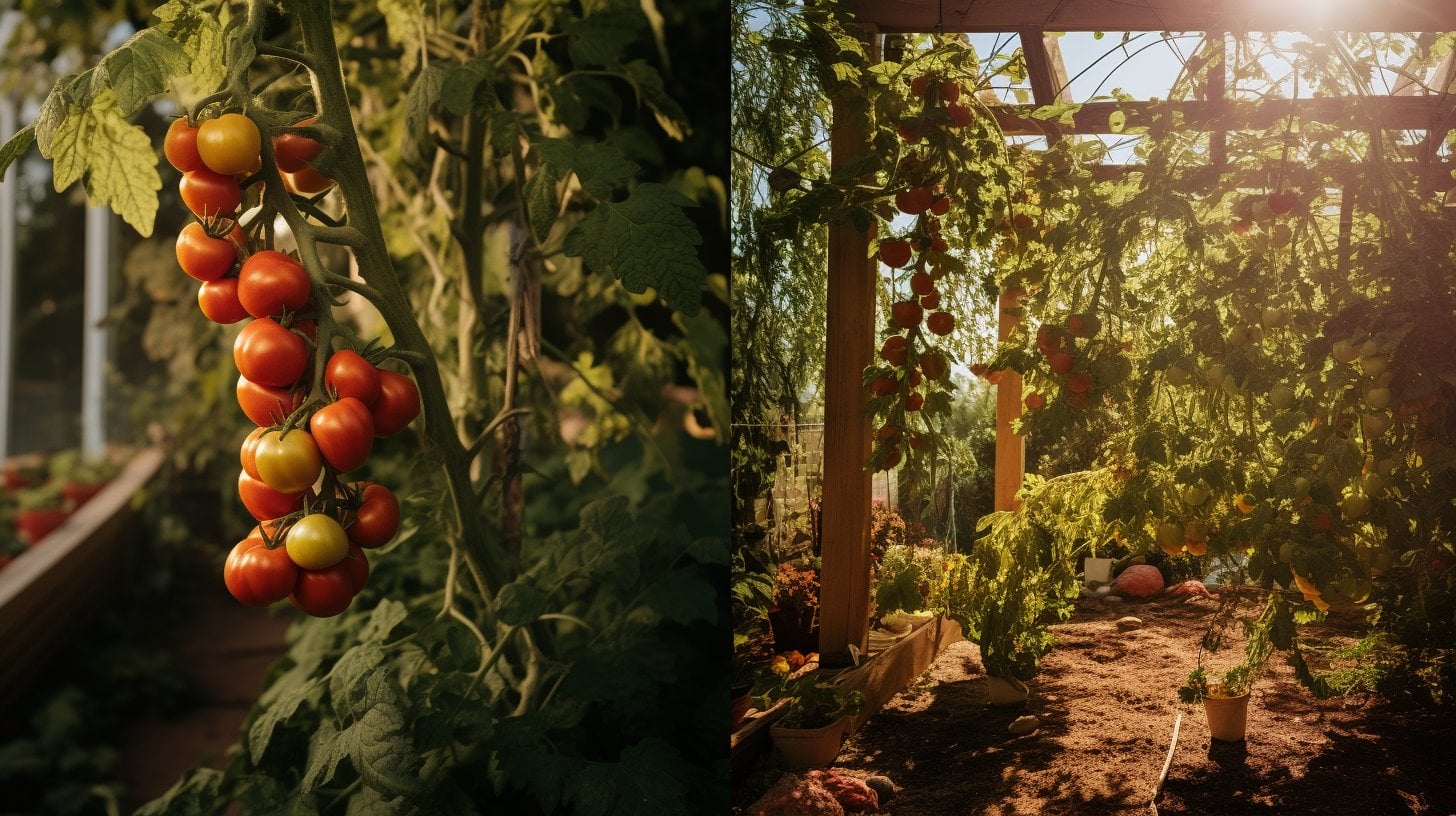
There’s a real science to figuring out how to plant your tomatoes inches apart.
It’s not just about giving them room to grow; it’s about understanding how sunlight, ventilation, and soil nutrition affect their overall health.
If you don’t get it right, you’re risking disease and low yield, which I’m sure none of us want.
Deciphering the Role of Sunlight, Air Circulation, and Soil Nutrition
I’ve found that considering sunlight, ventilation, and soil nutrition can make a difference when deciding how far apart to plant my tomatoes. These factors, when balanced properly, can foster a flourishing vegetable plantation.
Sunlight: I give all my tomatoes at least 6-8 hours of sunlight daily. Too much shade hampers the growth.
Air Circulation: I always leave enough room between plants to let them breathe. This reduces the risk of fungal diseases.
Soil Nutrition: I enrich my garden soil with organic compost; it’s the lifeblood of growing tomatoes.
Moisture: I’m careful not to overwater, which can lead to plant diseases.
Factoring in Growth Potential when Determining How Far Apart to Plant
In addition to sunlight, ventilation, and soil nutrition, I must consider each plant’s growth potential, as it will significantly influence my decision on their placement on the plantation.
Knowing how far apart tomatoes can be planted is key. I’ve learned that determinate tomatoes need less room. They’re compact and only grow to a certain point, so they’re great for container gardens or tight areas.
On the other hand, undetermined varieties require more room to grow, as they keep growing and producing fruit until killed by frost. For just one tomato, I can allow it to spread out and flourish in its own area.
It’s a delicate balance, but with careful planning and understanding, even the most challenging planting scenarios can be mastered.
Understanding the Consequences of Overcrowding: Disease and Low Yield
Overcrowding my plantation can lead to disastrous consequences, including disease spread and low yield. Proper spacing for these plants is crucial in understanding the consequences of overcrowding: disease and low yield. It’s essential to optimize your plantation area and plant your tomatoes properly.
- The close proximity of overcrowded plants forms a humid environment, perfect for fungal diseases.
- Overcrowding interferes with airflow, leading to poor plant health and potential disease.
- The competition for resources in a crowded garden can result in low yield.
- When plants are too close, they cast shadows on each other, limiting the sunlight necessary for photosynthesis.
Therefore, knowing how far apart you should plant isn’t merely an aesthetic choice but a strategic move for a successful harvest.
Practical Guide to Spacing Your Tomato Plants
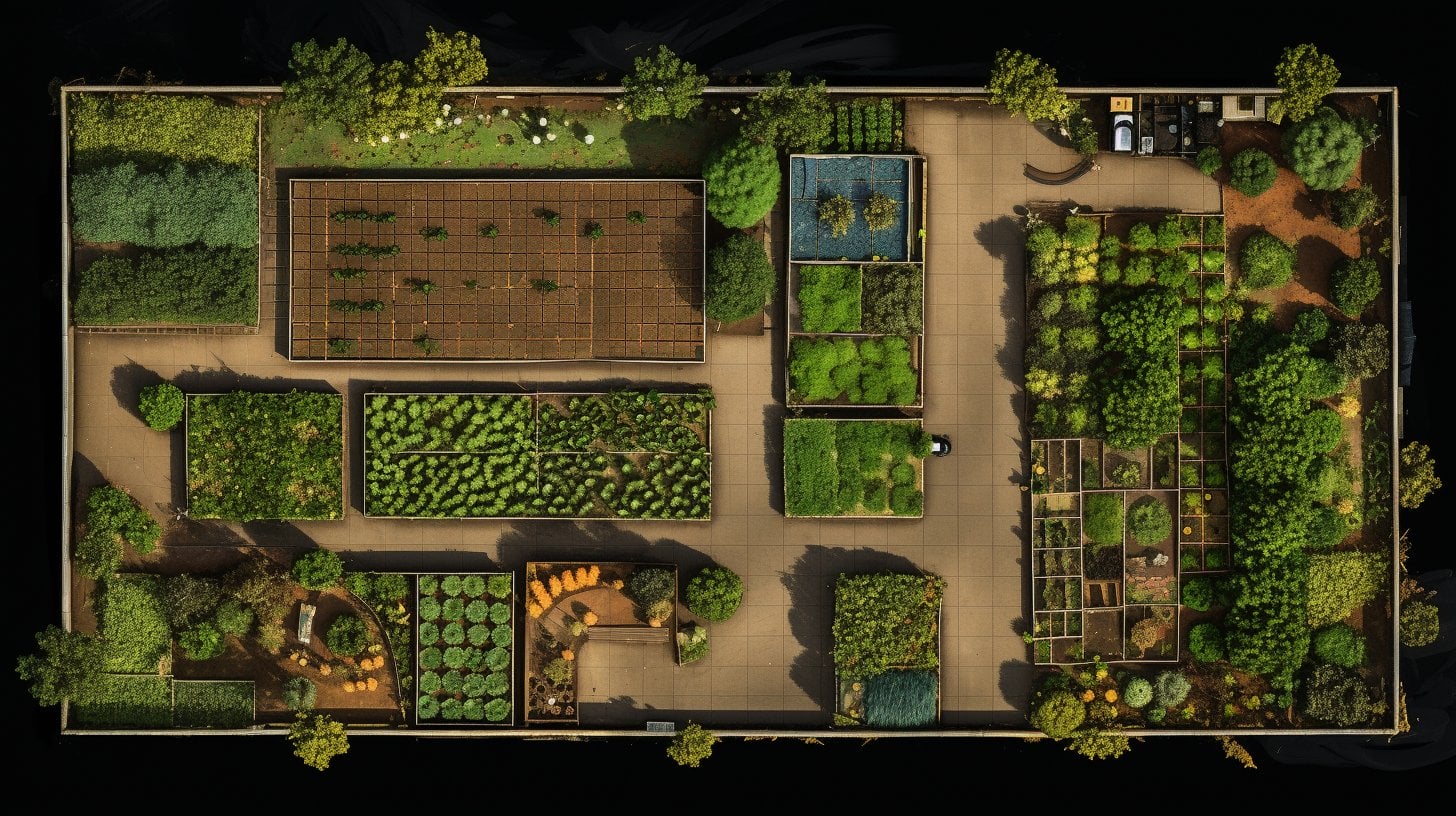
Now that we’ve explored the science behind tomato spacing let’s put that knowledge into action.
I will guide you through the practical aspects of spacing your tomatoes.
We’ll cover everything from mapping out your plantation for optimal spacing to the tools and techniques you’ll need and even how to adapt these recommendations to your own unique garden.
Mapping Out Your Garden for Optimal Tomato Spacing
I’m carefully planning my garden layout to ensure optimal spacing for these plants. Mapping out your garden for optimal tomato distancing is crucial because spacing is important for healthy growth.
Here are the steps I’m taking:
- First, I assess the total available area in my garden.
- Secondly, I determine how many tomatoes I want to grow.
- Then, I calculate how far apart tomatoes should be planted, considering each plant’s need for sunlight and ventilation.
- Finally, I visually represent my plan, ensuring all these plants are planted at the correct distance apart.
Using this method, I can maximize my yield, minimize disease, and ensure each plant has enough room to thrive. Proper planning is the key to a successful harvest.
Tools and Techniques to Ensure Accurate Plant Spacing
To ensure accurate plant spacing, I’ve found some handy tools and techniques that really make the task a breeze. When determining how far apart to plant tomatoes, it’s essential to consider the area each plant needs to grow healthily.
Here’s a simple table to guide you:
| Tool/Technique | Purpose | Use in Your Garden |
| Ruler/Measuring Tape | To measure the exact distance between plants | Use to measure the distance between the spots where you’ll plant tomatoes |
| Stakes and String | To create straight lines and even spacing | Use stakes and string to mark where you’ll plant tomatoes in your garden |
| Gardening Spade | For digging holes of the right depth | Use to dig holes for your tomatoes |
These tools and techniques to ensure accurate plant spacing could transform your gardening experience!
Adapting Spacing Recommendations to Your Personal Garden
While these guidelines are a good starting point, I must adapt them to my garden’s specific needs and conditions. When it’s time to plant your tomatoes, consider your home garden’s unique characteristics.
- The size of your garden plot can affect how closely your tomatoes can be planted.
- The type of tomatoes you are growing also matters; some need more room than others.
- The soil quality and sunlight exposure of your garden can also impact the optimal spacing for your plants.
- Lastly, consider your garden’s micro-climate; some areas might be warmer or cooler than others.
Adapting spacing recommendations to your garden’s specifics will ensure your tomatoes thrive.
Can the Same Planting Techniques for Spaghetti Squash Seeds be Applied to Tomato Plants?
When considering planting techniques for tomato plants, it is important to remember that plant spaghetti squash seeds require a different approach. Tomato plants thrive with a different set of requirements, such as specific soil conditions, adequate sun exposure, and appropriate staking or support systems. Therefore, it is not recommended to apply the same techniques for both plants.
Advanced Tips for Managing Tomato Plants when Space is Limited
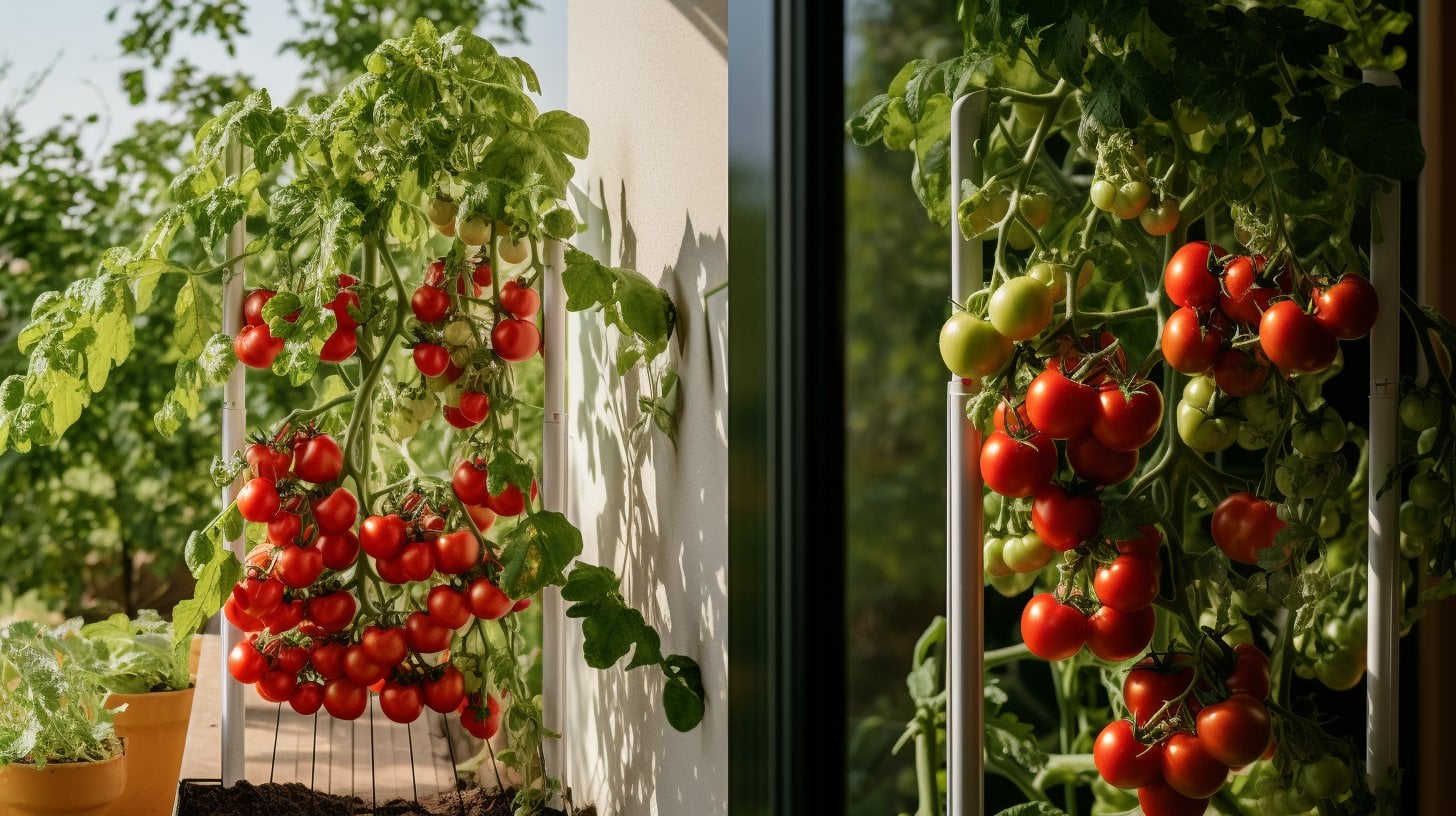
Even with a limited area, I’ve discovered advanced strategies to effectively manage tomato plants.
By leveraging vertical gardening, I’ve grown undetermined plants upwards, not outwards.
I’ve also implemented pruning techniques and maximized container gardening for more efficient tomato cultivation.
Harnessing the Power of Vertical Gardening with Indeterminate Plants
I’ve found that vertical gardening can be a real game changer when planting undetermined tomato plants. They just keep growing, unlike determinate ones that grow to a certain size and stop.
Here’s why:
- Indeterminate plants can be trained to climb a stake, fence, or cage. This vertical growth pattern saves room and can lead to healthier plants.
- Staking also allows for better ventilation, reducing the risk of fungus and disease.
- It’s easier to inspect and harvest large ones when you have staked tomatoes, and it’s growing upwards.
- Vertical gardening also reduces the chance of fruit rot because the tomatoes are off the ground.
In a nutshell, mastering vertical gardening is a fantastic way to get the most out of your indeterminate tomato plants.
Implementing Pruning Techniques to Control Growth
Implementing effective pruning techniques is crucial to control the growth of my indeterminate plants. Unlike determinate tomato varieties, indeterminates need regular pruning to keep them in check. This not only promotes healthier growth but also maximizes the yield, ensuring one tomato per cluster.
Implementing pruning techniques to control growth can be more straightforward with a handy reference. Here is a simple guide:
| Technique | Use for | Effect |
| Pinching | Indeterminate Varieties | Controls height and promotes bushiness |
| Thinning | Both Varieties | Improves air circulation, light penetration |
| Topping | Indeterminate Varieties | Controls height, encourages lower growth |
After mastering the art of tomato spacing, take your gardening to the next level with our guide to the best electric pruning saw for the ultimate garden care combo!
Making the Most of Container Gardening for Tomato Cultivation
For my small urban area, I’ve found that container gardening is a godsend for cultivating robust, productive tomato plants. Growing tomatoes in pots is easier than you think, especially when you’re dealing with compact plants like cherry tomatoes. You just need to make sure there’s enough room for one plant.
- Picture a lush, vibrant tomato thriving in a sizeable pot on your balcony.
- Imagine the sun-warmed, sweet burst of freshly plucked cherry tomatoes in your mouth.
- Visualize your pot’s deep, rich soil, offering just enough room for your plant’s roots to spread and draw nutrients.
- Think about the satisfaction of nurturing one plant, watching it thrive, and reaping its abundant fruit.
After mastering the art of optimizing tomato plant spacing, don’t miss out on unraveling the mystery behind tomato plant leaves turning brown and curling, a crucial read for every gardener aiming for a healthy, bountiful harvest!
Frequently Asked Questions
What Common Diseases Affect Tomato Plants, and How Can Proper Spacing Help Prevent Them?
Common diseases like blight, wilt, and root rot often plague tomato plants. By spacing them properly, I’m allowing ample airflow, reducing moisture buildup, and limiting disease spread. It’s a key preventative measure.
How Long Does It Typically Take for a Tomato Plant to Bear Fruit?
In my experience, one tomato plant typically takes about 60-80 days to bear fruit after being transplanted. However, it’s dependent on the variety and the growing conditions, so it can vary.
Does the Type of Soil Affect the Spacing Needed for Tomato Plants?
Yes, the soil type can affect tomato plant spacing. Sandy soils require closer spacing because they don’t hold water well. On the other hand, clay soils retain water, allowing for wider spacing between plants.
How Can I Protect My Tomato Plants From Pests?
I use natural methods like introducing beneficial insects to protect my tomato plants from pests. I also apply organic pesticides, ensure good ventilation, and remove infested plants to prevent the spread of pests.
How Often Should I Water My Tomato Plants?
To ensure healthy growth, I water my tomato plants regularly. The frequency depends on the weather, but generally, it’s best to water them deeply once to twice a week.
Conclusion
In conclusion, understanding the importance of proper tomato plant spacing can make all the difference for a fruitful harvest. Whether you’re dealing with different varieties or dealing with limited areas, careful planning is key.
Remember, a well-spaced tomato plant is a happy tomato plant. Don’t cram them too closely together; give them room to grow.
With the right knowledge in your gardening toolbox, you’re set for a successful fresh tomato garden this season. Happy gardening!

